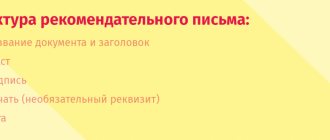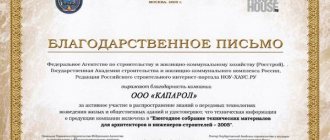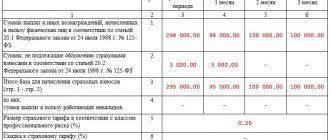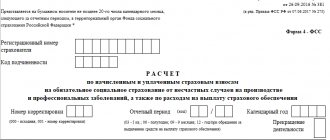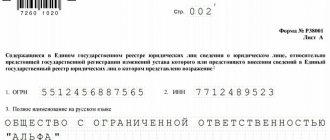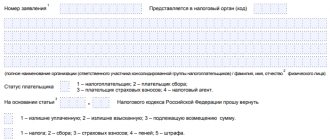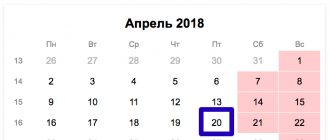We present the correct resume sample for applying for a job, as well as ready-made resume examples for various professions, which you can download for free in DOC (WORD) or PDF format. This type of resume is convenient and attractive for HR specialists and everyone who decides to select candidates for an interview. Our resume samples are written by highly qualified job search and career development specialists with years of experience in the field.
Sample resume for applying for a job
Smirnov Alexander
Date of birth: 01.04. 1981 Residence: St. Petersburg, Primorsky district. Ready for business trips. Ready to move to Moscow.
Contact information: Phone: +7 (9хх) ххх-хх-хх Email
Desired position: Head of Sales Department
Desired income level: 100 thousand rubles
Key skills:
- Active sales, expansion of the customer base;
- Working with key clients, eliminating disagreements;
- Sales department management.
Achievements:
- Created a sales department with "0". Subsequently, the department (5 people) under my leadership regularly fulfilled the plan for attracting new clients and sales;
- Brought 7 key clients to the company (totaling up to 50% of orders);
- Developed and implemented a technology for selling technically complex equipment in the company.
Experience:
10. 2008-07. 2014 Head of Sales Department
NNN-group LLC (www.nnn-grup.com), St. Petersburg
Field of activity of the company: wholesale trade in construction equipment and components for it
- Management of the sales department (subordinate to up to 5 people);
- Working with key clients, eliminating disagreements;
- Working with accounts receivable.
07.2003-09.2008 Sales Manager
XXX-group LLC (www.xxx-grup.com), St. Petersburg
Field of activity of the company: wholesale trade of construction equipment
- Active sales, expansion of the customer base;
- Working with key clients, eliminating disagreements;
- Timely and systematic monitoring of prices of similar products of competitors;
- Working with accounts receivable.
Education:
2003 St. Petersburg State University of Economics and Finance, St. Petersburg
Faculty of Labor Economics and Personnel Management; Specialty: “Human Resources Management”; Qualification: “Manager” (Diploma with honors).
2003-2014 Attending numerous seminars and trainings on sales and working with clients (“Cold calling”, “Sales using the SPIN method”, “Active sales”, “Sales”, “Working with objections”, etc.)
Additional Information:
Foreign languages: English – advanced.
PC knowledge: confident user (MS Office; CRM; 1C).
Recommendations available upon request
How to write a resume
Writing a resume correctly is often the key to starting your successful career. You can be three times a professional, but if you fail to convey this information, your potential employer may simply ignore you. This is why it is so important to know how to write a resume that clearly demonstrates all your strengths.
General rules for writing a resume
- Recruiters are busy people. Therefore, the goal of your resume should be to show, as quickly as possible, why you are the ideal candidate. For this reason, you also need to indicate in the title what position you are applying for, and present the text of the resume itself concisely and concisely. There is no need to spread your thoughts over five pages of text - the recruiter simply does not have time to read such opuses. At best, he won't read it to the end. At worst, he won’t start reading at all, afraid of the large volume.
- Write correctly. Even one typo can characterize you as a careless person, inattentive to details. So before sending, carefully re-read the written text again. And if spelling and punctuation are not your strengths, you can additionally ask someone close to you to read the resume.
- And one last thing. If you are applying for positions in different companies, write a separate resume for each. Creating a template document and sending it as a mass mailer is a blunder that could cost you the job you want. But if you think about how to write a resume and adapt it to each vacancy, this will guarantee you results.
Types of resumes
Today there are three types of modern resumes: chronological, functional and mixed (hybrid). The choice of a specific type of resume depends on your experience (its pros and cons).
Chronological summary
Thus, a chronological resume focuses on describing your career path (in reverse chronological order). It is better suited for those who have not changed their field of activity and developed in one company or industry.
The structure of a chronological resume is simple
- Personal data (full name, age, residence)
- Desired position/desired income
- Work experience (in reverse chronological order)
- Basic and additional education
- Additional information (PC proficiency and foreign languages, availability of rights, etc.)
The advantages of this resume are its simplicity and familiarity for recruiters. Disadvantages - in such a resume, gaps in your experience and long breaks in work are obvious.
Functional resume
A functional resume focuses on your key skills and achievements. At the same time, the work experience itself is indicated very briefly. This resume is suitable for those who often changed jobs within the same position or changed their field of activity.
Functional resume structure
- Personal data (full name, age, residence)
- Desired position/desired income
- Key skills and achievements
- Work experience (in reverse chronological order: years of work, name of organization and position)
- Basic and additional education
- Additional information (PC proficiency and foreign languages, availability of rights, etc.)
The advantages of such a resume are that the recruiter immediately understands what the candidate knows and can do. Disadvantages: It is difficult to assess the stages of your career development.
Hybrid (mixed) resume
And finally, mixed or hybrid resume , as the name suggests, combines the features of a chronological and functional resume.
Here there is an emphasis on the candidate’s key skills, and one can see the applicant’s development from position to position. Personally, I like the mixed resume type best.
Formatting a resume
File name
The file name must contain your full name and position (vacancy). For example, Ivanov Ivan Ivanovich Logistics Manager. It is not at all necessary to write a “Resume”. The recruiter already knows what you sent him and why.
Size
The size of your resume with photo should not exceed 400-500 KB, otherwise there may be difficulties with sending it.
File format
Use the most common formats (doc or pdf) so that the recruiter does not have any difficulties opening it.
Volume
Maximum length 2 pages. All details will be discussed at the interview.
Structuring text and using different fonts and colors in design
How to submit a resume? Use standard Word fonts (Calibri, Arial, Times New Roman). Text color is black only. From the highlights – bold font for headings. Organize information clearly using headings, lists, etc.
Resume structure
Photo
Most organizations now prefer a resume with a photo so that they can immediately see the person applying for the position.
What to do:
- Choose a good quality color photograph on a neutral light background.
- Give preference to photos in business clothes with moderate makeup. A minimum of accessories for women and a neat haircut for men.
- If the situation allows, you can take a photo at your current workplace.
What not to do:
- Send a group photo.
- Send photos from vacation, in a swimsuit, or at home with a carpet in the background.
- Send a photo in which your face is covered with glasses or a hat.
- Ignore this point. Many recruiters simply will not consider a resume without a photo.
Example photo for resume
Accommodation
We indicate the city and region. If you are ready to move to another city, indicate: “Ready to move to the city...”
Example of “Accommodation” description
Contacts
This is an extremely important item, so please fill it out carefully.
What to do:
- Indicate several ways to contact you (contact numbers, email).
- Make sure the specified contacts are working.
What not to do:
- Indicate a non-work phone number as a contact or simply turn it off after sending your resume. It’s enough to miss one call from a recruiter, and you won’t be invited to an interview, and writing a resume, even a very high-quality one, will be a waste of work.
- Indicate an email with a playful name as a contact. If you don’t already have a personal email, be sure to get one during your job search. Playful emails are the height of unprofessionalism and can cause you to be rejected as an applicant.
Example of a description of the “Contacts” block
Career objective
It would seem that everything is clear here: we indicate the position for which we are applying. And yet, mistakes are often made at this point.
What to do:
- Be clear about the position you are applying for.
What not to do:
- List all available positions in the company, claiming that you can handle any of them. You, of course, may well be such a one-man orchestra, and yet you should have one goal. Otherwise, the recruiter may get the impression that you don’t care who you work with – and this is already a frivolous attitude towards the chosen position.
- Leave this point unattended. The recruiter must immediately understand the resume for which position he is reading. No one will read into your work experience and skills, trying to guess what position you want to apply this experience and skills to.
Example of a “Desired Position” Description
Desired income level
A point that often becomes a stumbling block in writing a resume.
What to do:
- Indicate how much payment you would like to receive after tax.
What not to do:
- Confusing the “desired” level of income with the “dream” level. We would all like to receive millions for the work we love, but we need to soberly assess both our capabilities and the capabilities of the employer. A too high number on this point may scare off the recruiter.
- It is too modest to indicate a figure below the average salary level for similar positions. Such an underestimation does not at all guarantee that you will be hired for this position in order to save money. On the contrary, the recruiter may be wary of such low requirements. Perhaps you feel insufficiently competent for this position if you are willing to work for little money?
Example description of “Desired income level”
key skills
One of the main points.
What to do:
- Select 5-7 of your skills that are optimally suited for the chosen position. This could be expertise relevant to the industry you want to work in, ability to work with special programs or technology needed in your future position, or team management skills if you are applying for a management position.
What not to do:
- List more than seven skills. Focus only on the key ones.
- Focus on skills that will not help you much in the job you are applying for.
- Confuse skills and achievements. At this point, you indicate what you can do, and not what you have achieved with these skills.
- It is better to indicate skills such as computer skills and foreign languages in the “Additional information” section.
Example description of the “Key skills” block
Achievements
Here you describe everything that you have achieved thanks to the skills described in paragraph six.
What to do:
- List up to five of your key accomplishments.
- Be sure to highlight this item.
- Use more numbers in describing your achievements: the number of clients brought in, the percentage by which sales increased, etc.
- Have you won professional awards during your work? Be sure to indicate this at this point.
- If you are applying for a management position, be sure to include your team's achievements. This characterizes you as a successful leader.
What not to do:
- List achievements that have nothing to do with the position you are applying for.
- Take credit for other people's achievements: You must be able to back up everything you list in this section of your resume.
Example of a description of the “Achievements” block
experience
Here we indicate our career path over the past 10 years (last 3 jobs).
What to do:
- List 3 previous jobs in reverse chronological order (or all jobs in the last 10 years).
- The correct format for this item is: month and year of starting work - month and year of ending - position indicating employment
- the name of the company (in full) and its form of ownership, indicating a link to the company’s website and the city of its location
- scope of the company
- job responsibilities (briefly, 5-7 main)
What not to do:
- Conceal valuable work experience if it is not confirmed by an entry in the work book. Your potential employer is primarily interested in what kind of work you can handle, and only then – what is indicated in your employment contract. Therefore, be sure to describe all work experience that may be useful to you in your new position. But do not forget to indicate under what conditions you worked (without registration, under a contract, etc.).
- Allocate more than one record per organization. Even if the company you worked for changed its name, or you moved to a similar position within the same holding, etc., describe this in one paragraph so as not to confuse the recruiter and not create the impression of changing jobs too often.
An example of a description of the “Work Experience” block
Education
What to do:
- Indicate in reverse chronological order the primary and additional (if any) higher and/or secondary specialized education.
- The correct format for this item is: year of graduation – name of educational institution – faculty – specialty – qualification.
- If necessary, you can indicate additional education (courses, seminars, etc.) in the format: year of completion – name of educational institution – name of the course.
What not to do:
- Indicate educational institutions as abbreviations. The recruiter is not required to know the names of all universities in the country, but must immediately understand where exactly you studied.
- List all the courses and seminars you have completed in your life, if they are not related to the position for which you are applying.
- On the contrary, keep silent about seminars or trainings that influenced your professional qualities.
- Training completed over the past 5-10 years is of particular value.
An example of a description of the “Education” block
Additional Information
As a rule, this point is reserved for skills that are not included in the sixth point.
What to do:
- Indicate the level of proficiency in foreign languages in accordance with the European classification (Elementary, Pre-Intermediate, Intermediate, Upper-Intermediate, Advanced, Fluent for English).
- Indicate the level of computer proficiency (User, Confident User, Advanced User, Programmer). You can also list the programs you own.
What not to do:
- Take this point as a place for your full biography. It will be enough to describe the skills mentioned above. It is better to leave more detailed information for the interview.
Example of a description of the “Additional information” block
Recommendations
It is enough to indicate: “Recommendations are available upon request.”
Example of a “Recommendations” description
The structure of a standard resume for applying for a job
As a rule, a resume is compiled in such a way that it contains several sections.
Each of them is designed to tell about you in a multiple, but clear way. There is no need to enter information that is not even indirectly related to future work. But at the same time, do not forget to provide information that characterizes you as a truly valuable employee. There is no standard resume template. However, when compiling it in any form, it is still recommended to adhere to a certain structure:
- Be as specific as possible about the position you intend to occupy.
- Contact details. Since the employer is unlikely to write you a letter, there is no need to provide a residential address. But be sure to include a phone number, email and other contact information where you can be reached.
- Please indicate at least the approximate amount of salary you would like to receive.
- Adding a photo is optional. But its presence will allow the employer to understand that you are taking a responsible approach to your job search. In addition, for example, if a company is looking for a salesperson or employee who will personally work with clients, your presentable appearance will be an important detail.
- Experience. Here it is recommended to indicate not only previous places of work, but also the responsibilities that were assigned to you. Many people believe that there is no need to mention the specialty in which you previously had to work if you do not apply for it. However, it is still worth indicating this data so that the employer has a general idea of what else you can do.
- Education. In this paragraph, indicate not only the educational institutions from which you graduated. It is recommended to mention additional trainings and courses that you have attended. This will make it clear that the potential employee wants to improve.
- Professional skills. This data will allow the employer to find out exactly what you can do, for example, work with some program, or operate some complex equipment.
- Language knowledge is an important factor that modern employers pay attention to. No need to be modest, write everything you know. If you know English perfectly, it would be a good idea to write a resume in two languages.
- Recommendations. If it is possible to indicate the contacts of those companies that will confirm that you are truly a specialist, why not use it. The more recommendations you provide from other employers, the higher your chance of getting the job you want.
- Additional Information. Describe yourself as a person. Responsibility and communication skills are, of course, good, but try to present this information as original as possible.
- If you are a member of professional associations, it is also recommended to mention this.
After writing your resume, it is recommended to check it for the following points:
- Check your spelling carefully. The presence of lexical and grammatical errors significantly reduces your chances;
- If you indicate the place where you currently work, use verbs, for example, “design”, “work”, “manage”;
- All text must be presented in the same style. If abbreviations are used, try to include them throughout the text. Naturally, abbreviations should be clear. If difficulties arise with this, it is better to refuse cuts;
- Check the readability of your resume. Print that is too small may cause the employer to miss some important information. Make the distance between lines convenient for perception, do not forget about paragraphs. It is quite difficult to read “solid” text;
- Print the text on good quality white paper;
- Make sure your resume is one or two pages long. It is recommended to shorten longer text;
- Check the correctness and reliability of the information entered. You must be prepared to confirm it if the employer requires it.
Read further:
Features of writing a resume in English (CV)
How to write a resume aimed at the Western market? The structure and requirements for the design of an English-language and Russian-language resume are very similar, but Western criteria for writing a resume are somewhat different from Russian ones. Therefore, to write a resume in English, you will need relevant tips and examples.
- When indicating your name in an English-language resume, do not forget that you do not need to indicate your middle name, and your last name should come after your first name, and not vice versa (Ivan Fedorov Fedorov).
- One of the main differences between an English resume and a Russian one is the Objective section. It indicates the position you want to fill.
- Abroad people attach great importance to recommendations from past jobs, so almost every resume in English should contain the phrase “References are available upon request.”
Remember: it is not enough just to translate from Russian: when writing an English-language resume, you must take into account all the nuances of the design. For those who are going to look for work abroad or apply for a position in an international company, we offer a resume form in English and a sample for filling it out, compiled by highly qualified specialists.
Resume template in English
Resume form in English
resume for a job
Download sample resume forms for employment by profession:
Sample resume for a hairdresser (.doc) Sample resume for a foreman (.doc) Sample resume for a cashier (.doc) Sample resume for a translator (.doc) Sample resume for a nanny (.doc) Sample resume for a waiter (.doc) Sample resume for an office manager (.doc) .doc) Sample resume for a supervisor (.doc) Sample resume for a merchandiser (.doc) Sample resume for a psychologist (.doc) Sample resume for a nurse (.doc) Sample resume for a storekeeper (.doc) Sample resume for a cook (.doc) Sample resume for a doctor (.doc) doc) Sample resume for a kindergarten teacher (.doc) Sample resume for a teacher/teacher/teacher (.doc) Sample resume for a PC operator (.doc) Sample resume for a security guard (.doc) Sample resume for a secretary (.doc) Sample resume for a builder (.doc) doc) Sample resume for a designer (.doc) Sample resume for a banker (.doc) Sample resume for a programmer (.doc) Sample resume for a director (.doc) Sample resume for a manager (.doc) Sample resume for an engineer (.doc) Sample resume for an administrator (.doc) doc) Sample resume for an economist (.doc) Sample resume for a sales consultant (.doc) Sample resume for a sales representative (.doc) Sample resume for a lawyer (.doc) Sample resume for a sales manager (.doc) Sample resume for an accountant (.doc)
How to send a resume to an employer
When your resume has already been compiled, you should take it seriously enough so that the employer’s first impression of you is positive, and the letter does not end up in the Spam folder and reaches the addressee.
When sending your resume by email, do not forget about the “Subject” field, it must be filled out. The subject line should explain the purpose of your application and indicate the desired position. For example: “Resume of Gnatenko R.P. for the position of hairdresser”, “Response to the vacancy of a German language teacher”.
In the body of the letter, include a short cover letter with brief information about why you should fill the position you are applying for. The resume itself must be attached as a separate file with the extension “doc” or “PDF”. The names of attached files should also be clear and informative (for example, “Resume_Kiselev_translator”).


